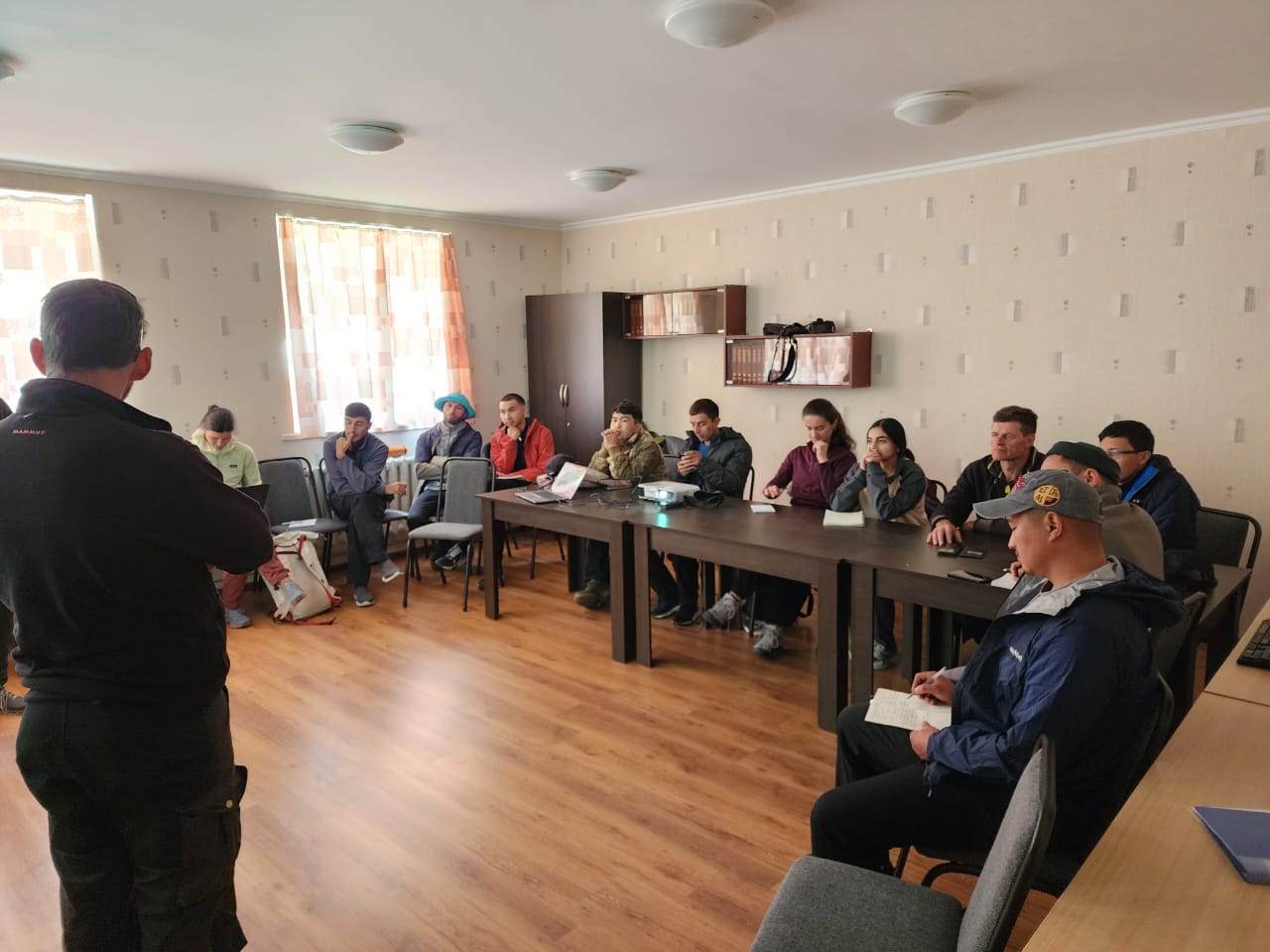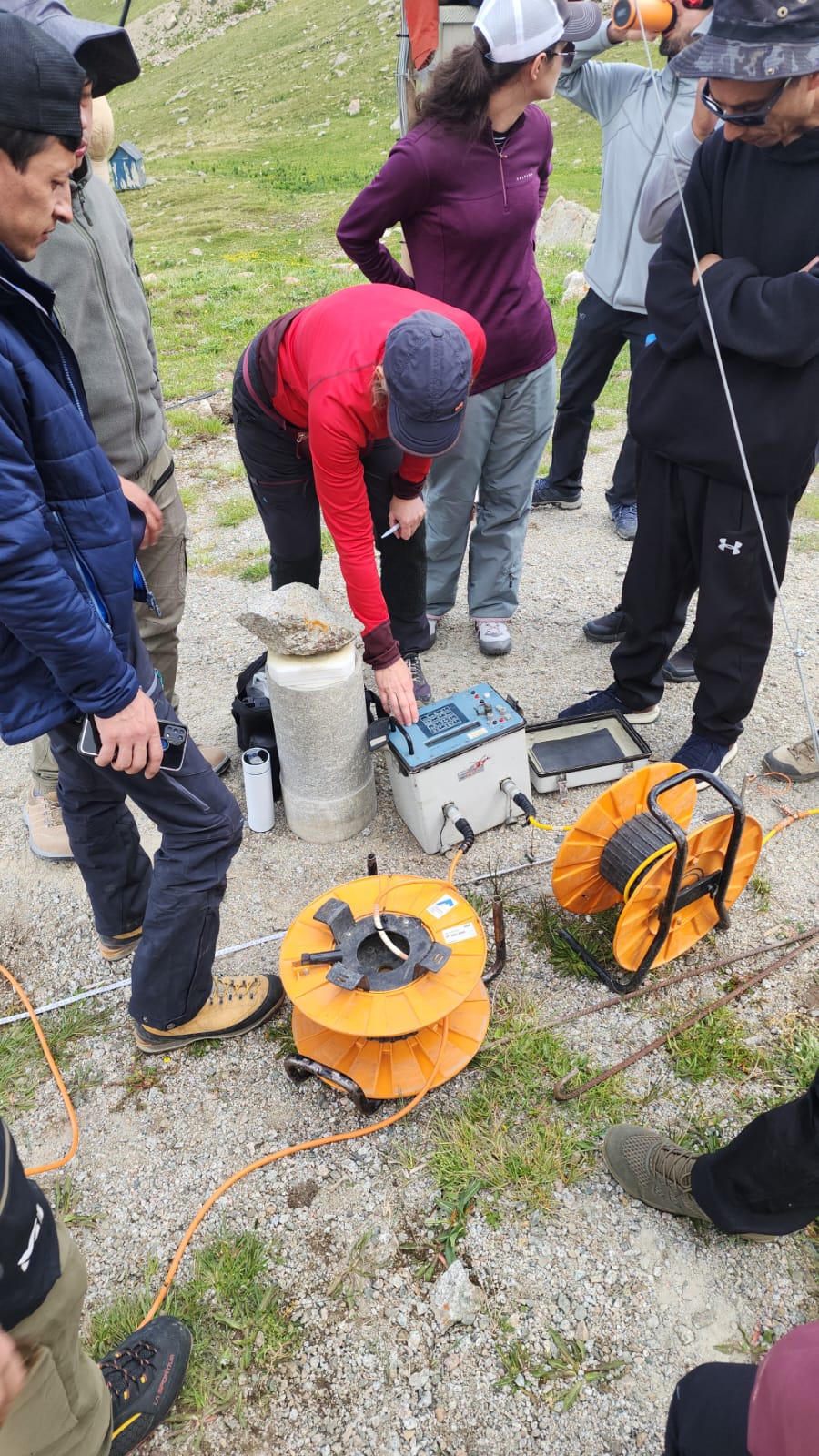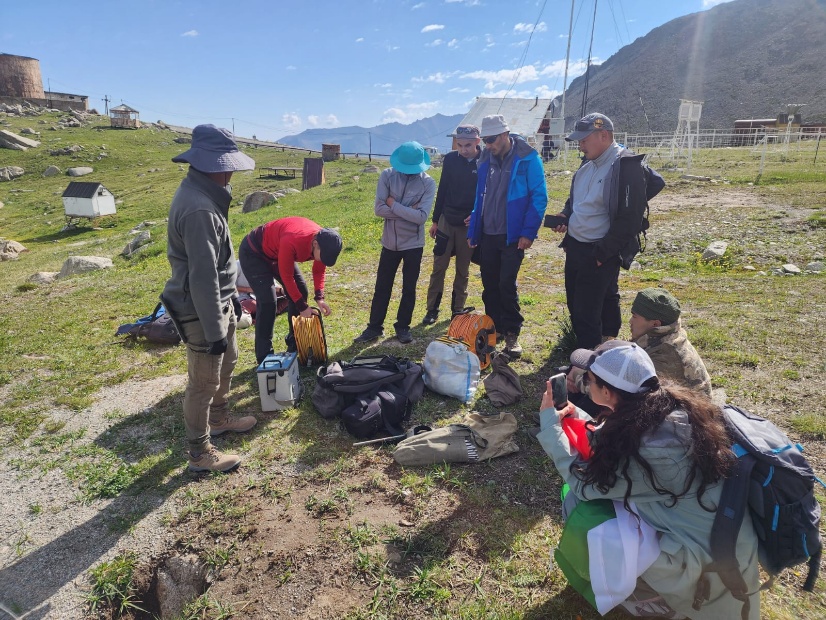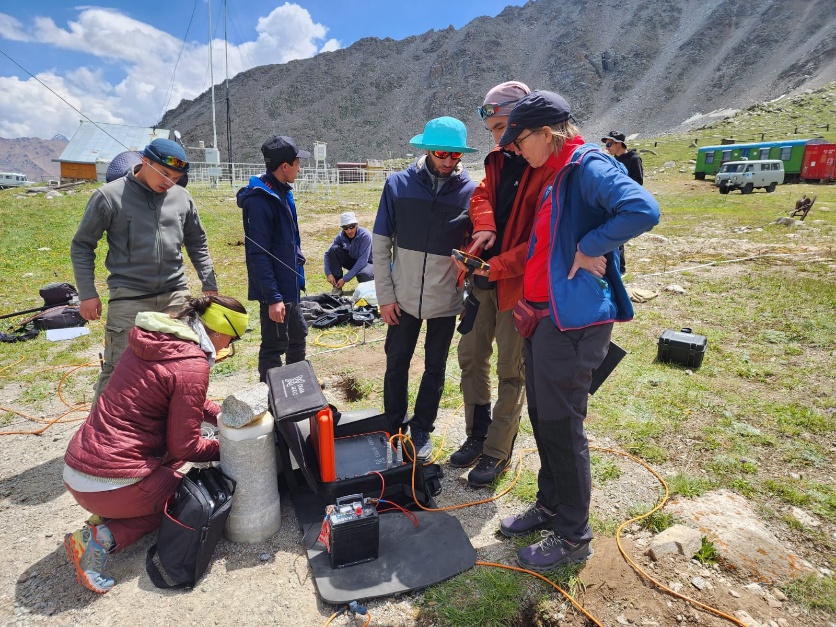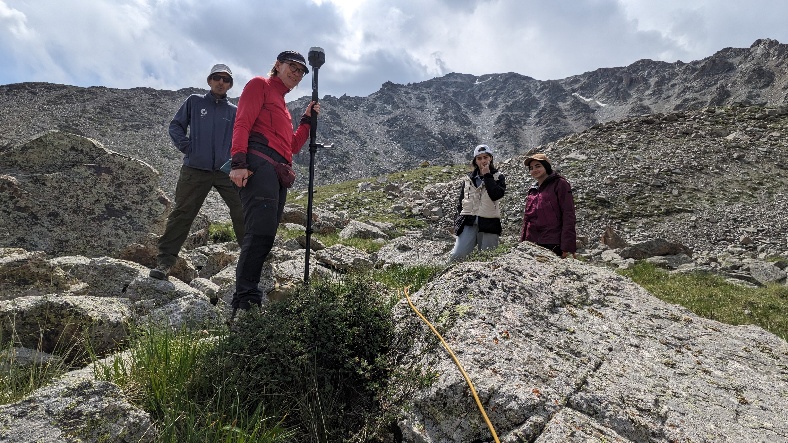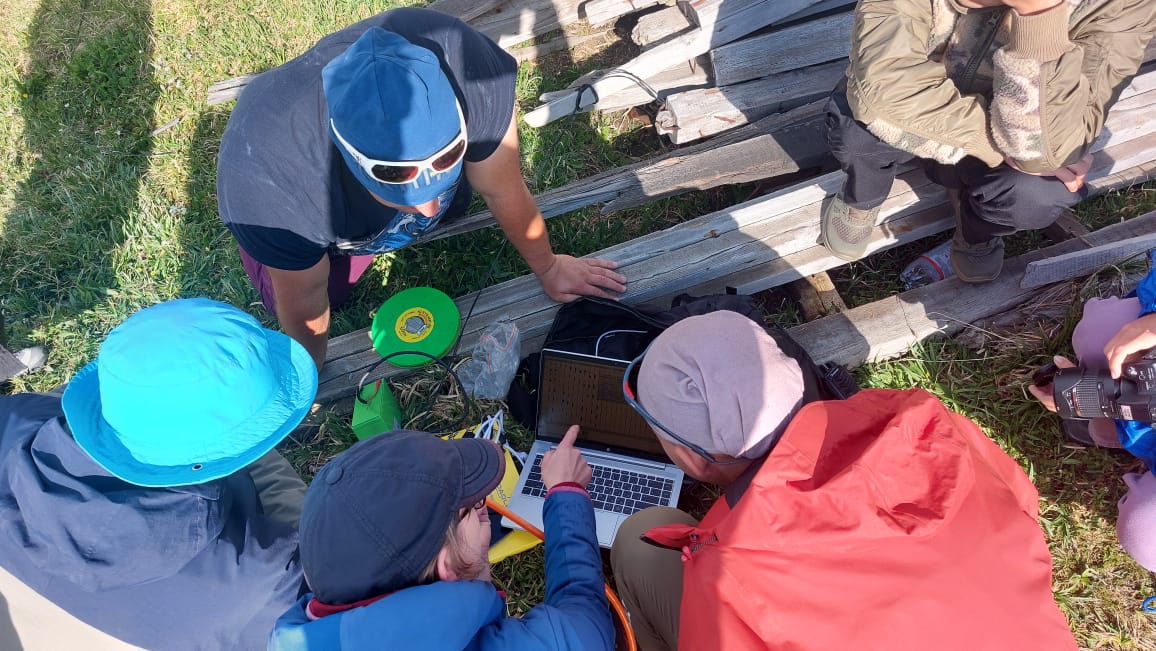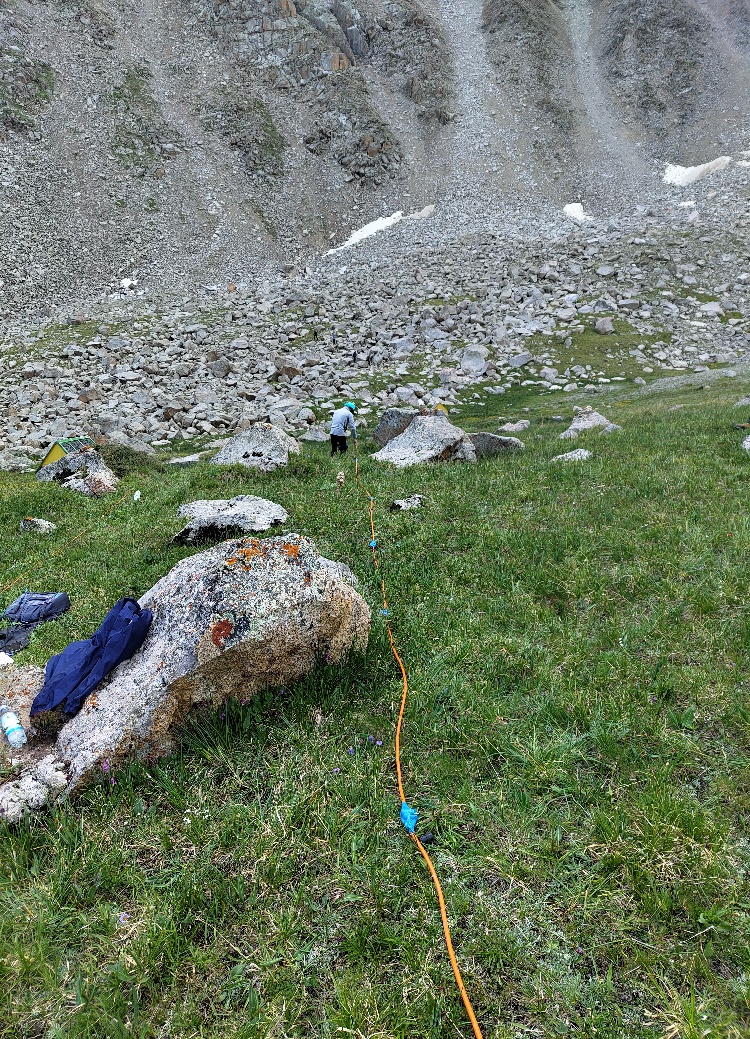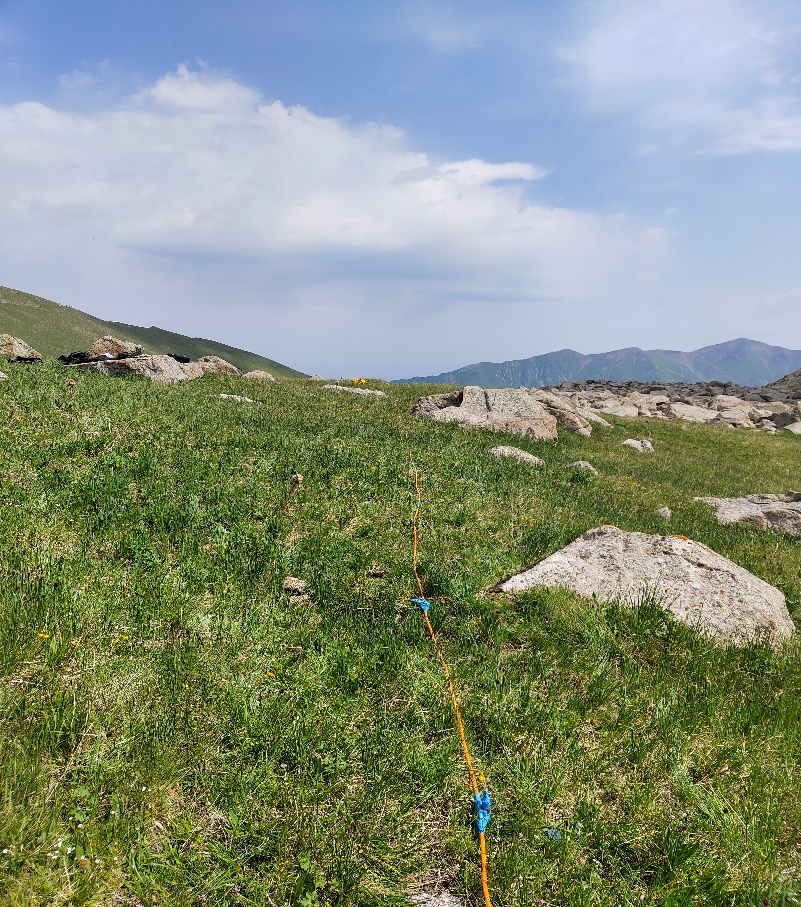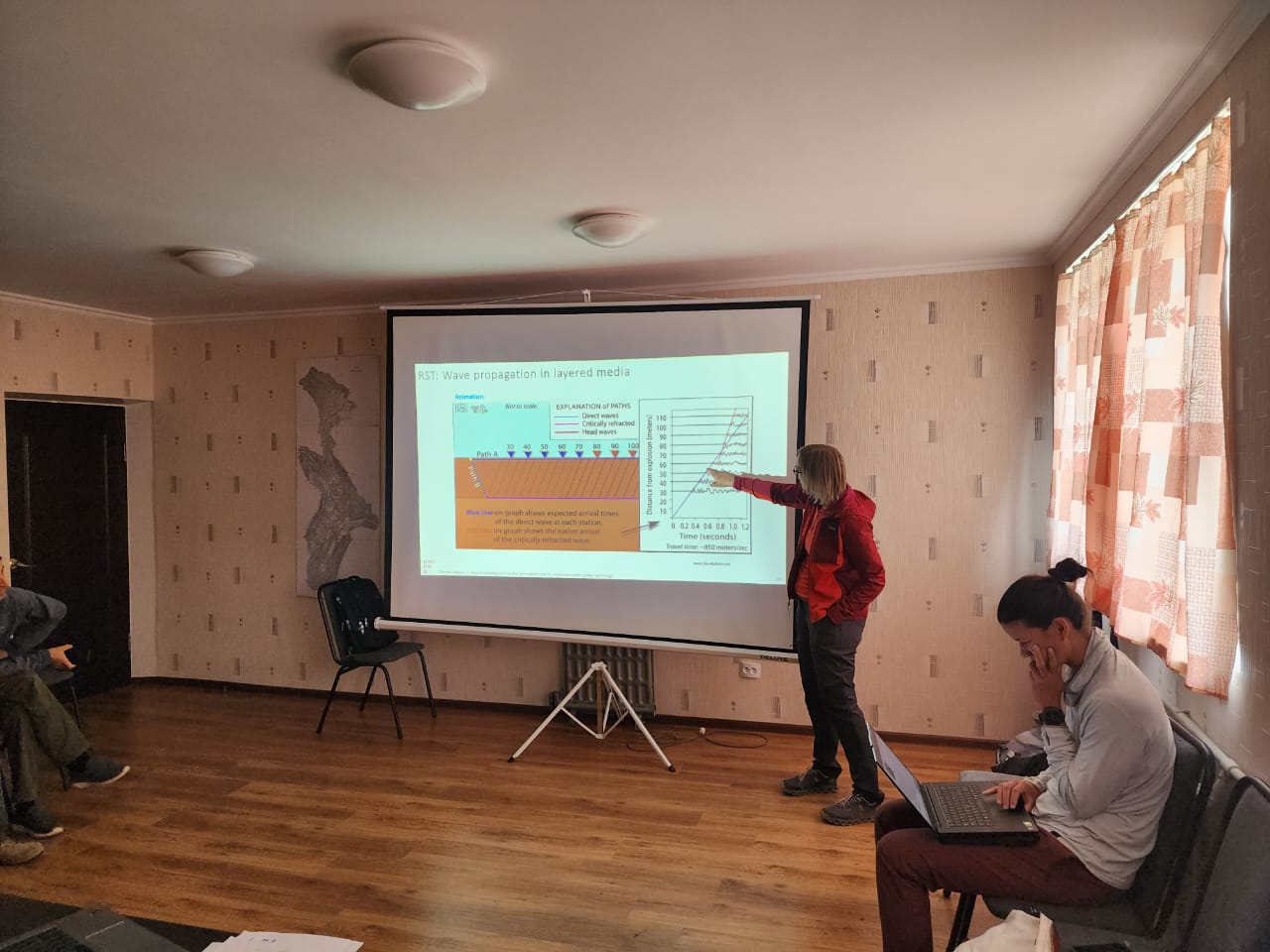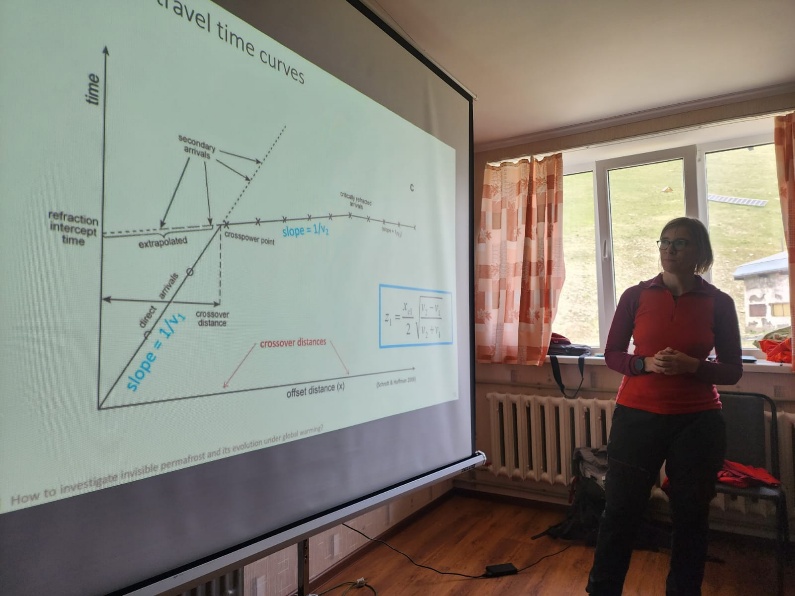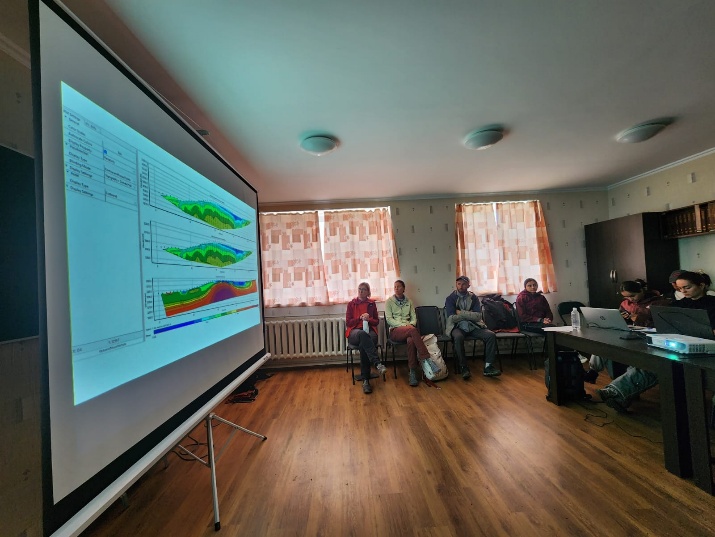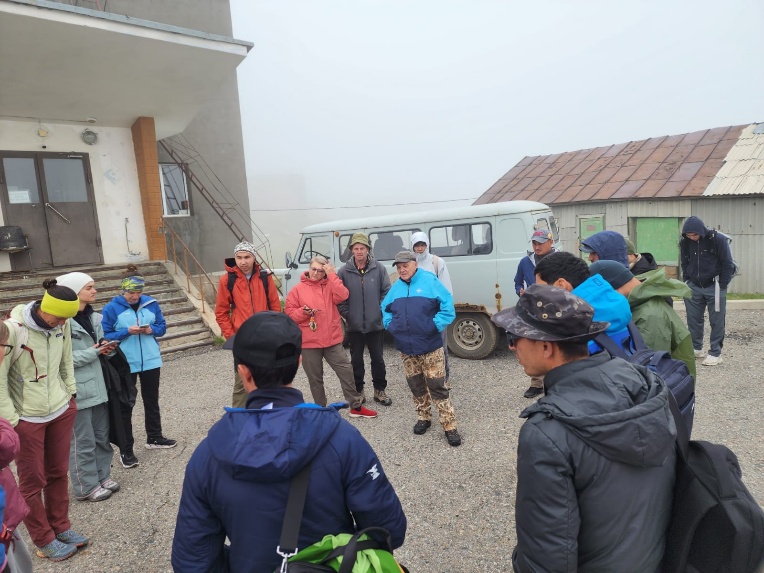Summer School “Geophysical Methods for Studying Permafrost and Rock Glaciers” under the GEF-UNDP-UNESCO Project at Zhosaly-Kezen Pass, Ulken Almaty River Basin, Kazakhstan
Summer School “Geophysical Methods for Studying Permafrost and Rock Glaciers” under the GEF-UNDP-UNESCO Project at Zhosaly-Kezen Pass, Ulken Almaty River Basin, Kazakhstan (June 23–27, 2025)
The Central Asian Regional Glaciological Centre Category 2 under the auspices of UNESCO, in collaboration with scientists from the University of Fribourg, conducted a Summer School on "Geophysical Methods for Studying Permafrost and Rock Glaciers" at the Zhosaly-Kezen Pass as part of the GEF-UNDP-UNESCO project.
A total of 19 participants (including lecturers, young professionals, and organizers) from Kazakhstan, Kyrgyzstan, Tajikistan, Uzbekistan, and Switzerland took part in the event.
The objective was to provide theoretical knowledge on permafrost and rock glaciers using electrical resistivity methods, as well as to offer practical training on the application of seismic sounding for the study of permafrost layers.
On June 23, the participants arrived at the Zhosaly-Kezen Pass, located at an altitude of 3,300 meters above sea level in the Ulken Almaty River Basin, where they took part in an introductory excursion to the observation sites (boreholes) monitored by the Central Asian Regional Glaciological Centre Category 2 under the auspices of UNESCO (CARGC).
CARGC staff member Viktor Goncharenko demonstrated the process of recording data from thermistor strings (thermocables) installed in boreholes drilled to depths ranging from 12 to 33 meters.

The summer school participants during an introductory excursion at the Zhosaly-Kezen Pass. In the background is a 32-meter-deep borehole, additionally equipped with sensors for measuring wind speed, air temperature, and solar radiation.
The afternoon session was dedicated to the theoretical component. Professor Christine Hilbich from the University of Fribourg, supported by Dr. Thomas Sack, delivered lectures on the study of permafrost and rock glaciers using electrical resistivity and induced polarization methods, including electrical profiling (EP), vertical electrical sounding (VES), and electrical resistivity tomography (ERT).
|
|
|
Theoretical part: Methods for studying permafrost using electrical resistivity tomography.
The participants were also shown the ERT results previously obtained by Professor Christine Hilbich in the Tien Shan and Pamir mountains.
June 24 and 25 were devoted to the practical component of the summer school.
The following equipment was used for setting up the ERT profiles:
- Syscal Junior – provided by the University of Fribourg
- Skala 48K12 – provided by the Central Asian Regional Glaciological Centre Category 2 under the auspices of UNESCO (CARGC).
|
|
|
The use of two different types of geophysical survey systems for imaging the same profile allowed for subsequent assessment of the quality and effectiveness of each system in the study of permafrost.
Due to weather conditions, it was also decided to conduct the practical session on the use of seismic sounding methods for permafrost studies first, postponing the theoretical component to another day.
For the setup of seismic survey profiles, the following equipment provided by CARGC was used DAQlink-5 – a seismic acquisition and monitoring station.

DAQlink-5 is a mobile linear seismic station capable of conducting seismic surveys using various methods.
During the practical training sessions, a total of three ERT profiles and two seismic survey profiles were established.

Layout of the electrical resistivity tomography (ERT) profiles (marked in blue) established during the practical sessions of the training.
One seismic survey profile was laid parallel to ERT profile No. 1, and the second — parallel to ERT profile No. 3, to enable static correlation between the two variables.
|
|
|
|
|
Practical sessions with geophysical survey systems.
Professor Christine Hilbich presented the setup procedure and data acquisition algorithm using the Syscal Junior system.
Alibek Taskynbayev, an engineer from CARGC, conducted a practical session on configuring and operating the Skala 48K12 system.
|
|
|
|
|
|
|
|
Practical sessions with the DAQlink-5 seismic survey system.
As with the electrical resistivity tomography, the position of each electrode and geophone was recorded using DGPS.
On June 25, Professor Christine Hilbich introduced the participants of the summer school to the theoretical foundations of the seismic method for the investigation of permafrost.
|
|
|
Presentation of principles of seismic sounding and its applicability in the study of permafrost and rock glaciers.
June 25 and 26 were dedicated to processing the data collected during the practical sessions of the electrical and seismic surveys.
The software Res2Dinv and ZondRes2D were used for data processing.
The summer school participants were divided into three groups, each of which presented its results and data interpretation on June 27.
|
|
|
Presentation of processed data and interpretation discussions
As a result of data processing, the participants identified zones of high electrical resistivity on all three electrical resistivity tomography (ERT) profiles, indicating the presence of permafrost in the surveyed areas.
A comparison of ERT profiles obtained using Syscal Junior and Skala 48K12 showed consistently matching results, confirming the effectiveness of both systems.
|
|
а |
|
|
б |
ERT data of the same profile obtained using (a) Skala 48K12 and (b) Syscal Junior
On June 27, a field excursion and presentation on the activities of the branch of the Tien Shan High-Mountain Scientific Station of the Lebedev Physical Institute of the Russian Academy of Sciences was conducted at Zhosaly-Kezen Pass by V.V. Zhukov, the branch director, for the summer school participants.
|
|
|
Excursion on the branch territory
The summer school program on "Geophysical Methods for the Study of Permafrost and Rock Glaciers" concluded with a site excursion around the branch facilities and the award ceremony, during which participants received certificates of successful completion.
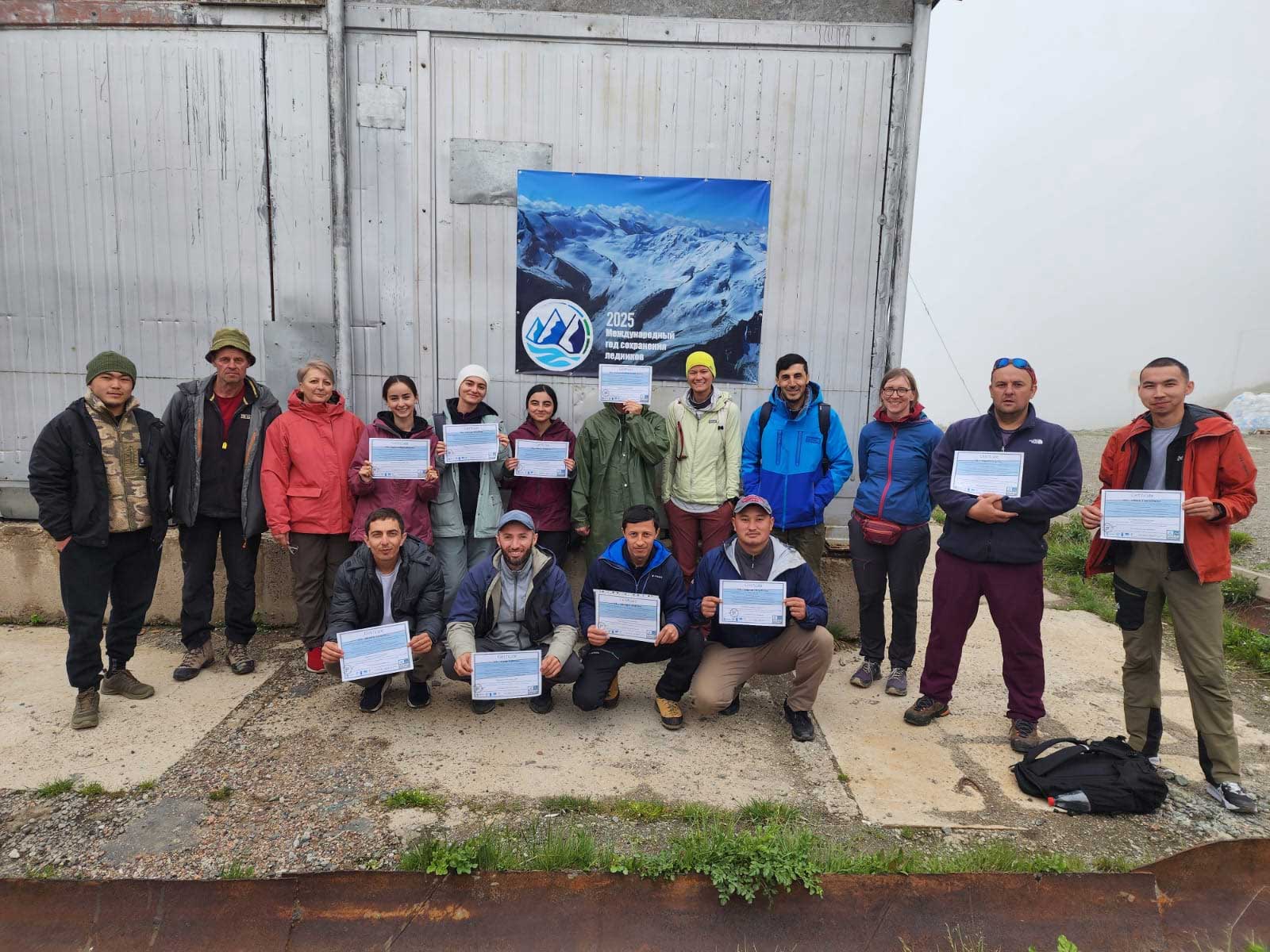 .
.
All participants highlighted the high quality of the training, as well as the uniqueness, importance, and practical relevance of the knowledge gained for the Central Asian region.
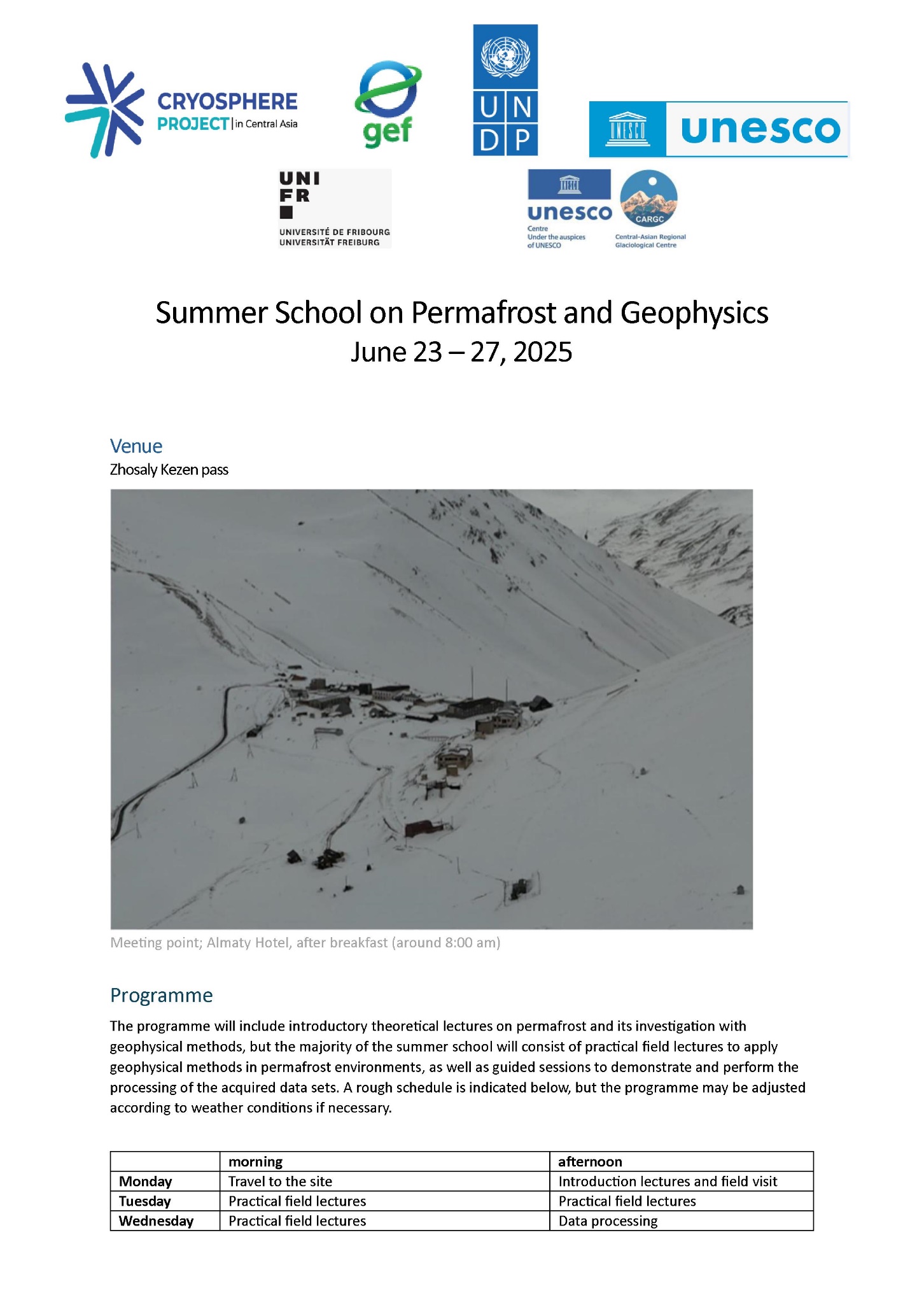

GEF-UNDP-UNESCO
July 31, 2025
